CITY OF MOLINE, ILLINOIS PARKS AND RECREATION MASTER PLAN





WITH SPECIAL THANKS TO:
The individuals who provided feedback to help generate the final recommendations of this document.
STEERING COMMITTEE:
Eric Griffith | Moline Parks and Recreation Director
Rodd Schick | Municipal Services Manager
Teresa Leedle | Recreation Coordinator: Green Valley
Stacy Laake | Marketing & Special Events Specialist
Bill Abel | President of the Moline Parks Board
Roger Clawson | Park Board Member
Jessica Finch | City Council Members/Park Board Liaison
Geoff Manis | President of the Friends of Moline Parks and Recreation Foundation
PROJECT TEAM:
Shannon Gapp
Chris Janson
Emily Huston
Tara Walters
Dan Schmitt
Brandon Meiton
Jake Deaver


A robust park system is closely linked with creating a thriving, inclusive, and enjoyable community.
Moline’s Parks and Recreation Master plan communicates the community’s future goals and influences decisions regarding investments, enhancements, and growth.
This plan will be reviewed every 5-10 years to adapt to the evolving requirements of our diverse and expanding community. This revision reflects a collective vision for our parks, recreational facilities, and trails, which has been developed in collaboration with Moline residents, elected officials, city partners, and various stakeholders.
I ntroduct I on 01
CHAPTER 1
Parks, recreation and trails are important elements in the quality of life for all communities. Not only do these elements provide a safe and healthy place to recreate, they also serve to beautify, protect the natural environment and influence the patterns of development in and around the community.
The City of Moline realizes the importance and benefits its parks, open space and trail systems have on the City’s character and quality of life and is committed to providing for the recreational needs of current and future residents. This plan intends to guide the continual improvement of the City’s park, recreation and trail systems and maintain its eligibility for State and Federal park and recreation grants. This plan envisions a connected system of parks, open spaces and trails throughout Moline, related to the City’s natural resources, geography and neighborhoods.
The plan is also intended to be a support document and component of Moline’s Comprehensive Plan, as well as align Moline with local and State initiatives to promote outdoor recreation. This plan along with the City’s other long-range plans and development-related ordinances, will be used to implement and promote its parks and recreation program.
Specifically the plan provides:
• Information regarding demographic trends
• An inventory of existing park and recreational facilities,
• An analysis of parkland and recreational needs and demands,
• General policy direction regarding park, recreation, open space, bicycle, and pedestrian facility planning and maintenance,
• Recommendations for new and improving existing park, bicycle and pedestrian facilities, and
• Implementation strategies.
This plan identifies conceptual locations and recommendations for different types of parks, trails, natural areas, and recreational facilities. In nearly every case, more detailed planning, engineering, study, budgeting, and discussions will be necessary before decisions are made to actually acquire land or construct recreational facilities.

When people talk about the places they love in a community, parks are typically at the top of the list. Parks, trails, and recreational programs are essential to the physical, economic, environmental, and social health of cities and their residents. To ensure that Moline’s parks and trails system continues to meet community needs and offer these benefits, the City requested the assistance of MSA Professional Services Inc. to complete this Master Plan. The purpose of the Master Plan is to guide the City of Moline in maintaining and enhancing its parks, trails, and recreational opportunities as the community grows; it also provides insight into the existing conditions and specific recommendations for each of the City’s parks and recreational spaces.
The information in this Plan represents the results of interactive and engaging outreach with Moline community members, stakeholders, and City staff. Prior to inventory and data collection, the Project Team met with City staff to establish objectives and expectations for the project; community members were then given the opportunity to share their thoughts on the existing conditions and future aspirations of Moline’s parks and trails.
One overarching goal of the Master Plan and drafting process was to communicate the importance of parks and recreation to people’s quality of life. When our parks, open space, and trails are accessible and well-maintained, we are more likely to engage with our community and reap the numerous benefits that access to nature provides. When our parks thrive, we thrive.
The benefits of parks go far beyond simply being spaces where people can recreate. Parks contribute to the physical and mental health of individuals and provide public safety, environmental, economic and social equity benefits to our communities. Recently, parks have come to the forefront of public health discussions. It is important to remember the benefits parks provide to the communities they serve.
Public parks are a unique amenity because they have the potential to be accessible to anyone in the community, regardless of age, gender, ability, socioeconomic status, race or ethnicity. Though we often find that disparities exist in the distribution and quality of parks and recreation amenities, many Leisure Services Departments across the U.S. are now rethinking how to engage and provide benefits to residents who do not currently have access to parks. If parks can be more inclusive, they have the potential to function as a nucleus of neighborhood activity, where residents can gather for social events, recreational activities, and meetings about local issues, increasing social interaction and creating an overall sense of community.

According to the National Recreation and Parks Association (NRPA), when individuals use green spaces, they have fewer health issues, improved blood pressure and cholesterol levels, and reduced stress—which leads to a lower incidence of depression and a greater ability to face problems. According to a report by the NRPA titled “The Economic Impact of Parks,” “Diabetic individuals taking 30-minute walks in a green space experienced lower blood glucose levels than spending the same amount of time doing physical activity in other settings. Thirty minutes of walking in nature resulted in larger drops in blood glucose than three hours of cycling indoors.”
While parks, forests and trails provide opportunities to improve the health of residents, they also contribute to the greater ecological health of the City. Parks are often tied together with environmentally sensitive areas such as wetlands, floodplains, surface waters, or significant woodlands which can include trails. These areas provide food and shelter for local wildlife and natural stormwater retention. Individual parks can provide important “rooms” of natural resource activity; however, they become even more functional when they can be linked together by environmental corridors, or “hallways.” Wildlife, plants, and water all depend on the ability to move freely within the environment from room to room.
Leisure time is an important component of everyone’s lifestyle and increasingly people are choosing locations to live based on quality-oflife factors such as recreational amenities. The ability to retain or attract new residents has direct economic benefits to the City. For this reason, having a great park, recreation, and trail systems contributes directly to economic development. According to a study completed by the National Recreation and Parks Association and George Mason University, 72% of the 70 communities studied use parks and recreation images in their economic development materials. The study notes that parks and recreation contribute to economic development through business attraction, business retention and expansion and talent attraction. In addition, if a park system is designed with connections to regional destinations, it can serve to bring in additional visitors. This additional tourism can be a significant benefit to local businesses. The City’s plan will align with regional and State plans to promote outdoor recreation in the greater area.

Connecting parks and recreational facilities to each other and the general population via trails is important to encourage safe, alternative modes of transportation. These paths can provide an important alternate means of traveling for those who prefer to bike for health or environmental reasons and for those who lack other means of transportation due to age, income or disability. Shared-use paths also provide important connections to public transit. According to the National Household Travel Survey conducted by the Federal Highway Administration, 85% of transit trips begin and end with walking and nearly one in six walking trips is made for the purpose of accessing public transit.
We are seeing increased usage of trails and parks that are forcing us to redesign common areas and improving pedestrian and bicycle flow to maintain social distancing. It is likely these shifts will impact parks into the future. Along with the design of park and recreation spaces, we are anticipating the way in which parks are funded is going to shift— there will likely be a more diverse set of funding sources and partnerships for park and recreation projects. A final anticipated impact is the fact that Leisure Services Departments are going to be prioritizing health equity and social justice in parks and programming.


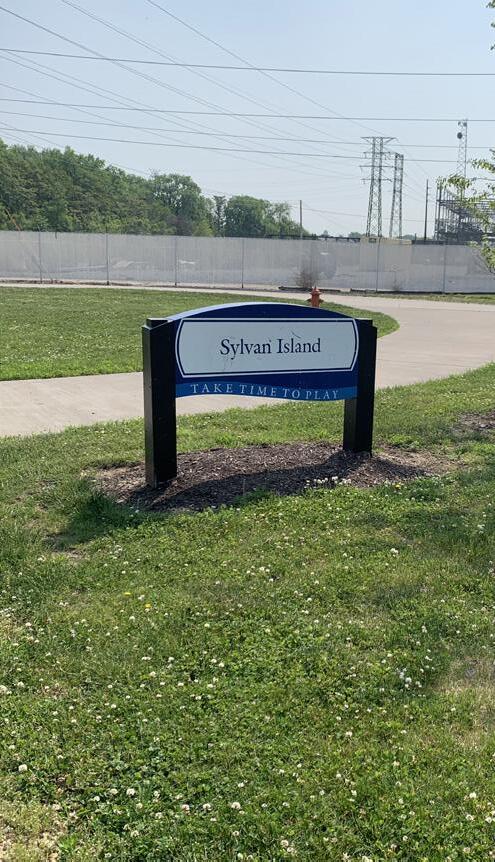
Recreation, bicycle, and pedestrian planning are essential components of long-range community planning in Moline. For this project, the City contracted with MSA Professional Services, Inc. to assist with an update to its plans.
Early in the planning process Moline facilitated an online community survey to gather citizen feedback on desired public park, trail, and recreational facilities. The process also included a public involvement through pop-up events. These were held to obtain input from the public on desired park and recreation improvements. The two pop-up events included a summer concert series and a touch-a-truck event. Both were highly successful and allowed the community to get involved in a setting outside of typical meeting locations such as City Hall. This allowed for open, transparent communication and a sense of ownership in the process. The plan content and format have been tailored to fit the needs of Moline.
CHAPTER 2
o verv I ew of M ol I ne P arks

Understanding the history, culture and traditions of a community plays a key role in planning for the future, as these are the underlying principles that help shape a community, as do its people. This chapter presents a synopsis of the community based on its geography, demographic information and history. This information provides an understanding of the community that fosters the exploration of recreation trends in the City of Moline which will in turn assist in the formulation of recommendations for park and recreation programs, amenities and services.

Parks are often the most important and highly prized components of any community. They are sources of civic pride and are essential to the physical, economic, environmental, and social health of communities and their residents. Good planning is essential to a community’s recreation system as it provides a means to meet the needs and wants of the community. As a plan is developed it is important to keep in mind the variety of benefits that parks and recreation add to the community.
When residents and visitors have access to parks, trails, and recreation facilities, they exercise more and are generally healthier and happier. Additionally, increased exposure to natural areas that parks and open space provide has been linked to improved physical and mental health. Parks and trails encourage healthy, happy, active lifestyles and improve overall quality of life throughout a community.
Parks have important social benefits. In a time when social media defines the interactions of many people, parks and recreational centers are places to meet, catch up with family members and friends, and feel like part of the larger community. As a focal point of neighborhoods, parks help develop connections between residents by providing a venue for community building gatherings, like school trips, festivals, and celebrations.
Parks and open space provide environmental benefits. Natural and planned vegetative landscapes found in parks, preserves and open spaces improve air quality and water quality. These areas may also play a role in stormwater management and protecting the quality and vitality of natural areas.
Numerous studies have shown that close proximity and access to parks, trails, and open space has a positive impact on residential property values. Commercial property values can also be increased with proximity to recreational amenities, creating potential for these sites to act as catalysts for future growth and development. Access to recreational amenities helps fuel growth and investment in local economies.
Parks contribute to aesthetics of a community. Parkways, treelined streets, gardens, views of water bodies, public art, trails, and landscaped areas around town are all things that contribute to creating beautiful places to live, work, and play. Visitors often remember a place by its access to beautiful natural areas, contributing to a positive community image. Improved linkages should also connect community parks to other community nodes. Attractive, safe and well marked linkages make essential contributions to a community’s livability and viability.
The definitions used in this plan are modified definitions used by the National Recreation and Park Association (NRPA). They are used to classify the existing recreation system and to guide plans for the future. They begin with the smallest and most intensely used and the proceed to largest and least used. Neighborhood and community parks are normally provided by municipalities. Larger recreation areas are normally provided by larger units of government or private enterprise.
Typically on a small lot (1/4 acre), located within a residential neighborhood. Usually have one facility and benches.
- Desirable size - 2 acres or less
- Acres/1,000 population: .25 to .5
- Service Area: 1/8 to 1/4 mile radius
Serves the needs of children 5-15 years old. It provides open fields, courts, shelter facilities, and play area. It should be within walking distance.
- Desirable size - 2-4 acres
- Acres/1,000 population: 0.5 - 1.5 acres
- Service Area: 1/4 to 1/3 mile radius
This provides open space for all ages and enhances the overall environment. A natural location is ideal for this type, and it usually has tables, benches, paths, lights, and is walkable.
- Desirable size - 3-7 acres
- Acres/1,000 population: 5.0 -8.0 acres
- Service Area: 1 to 2 mile radius
Serves the active needs of several neighborhoods. Includes more than a park such as a pool, community center, and fields for sporting events.
- Desirable size - 5 or more acres (15-40)
- Acres/1,000 population: 5.0 -8.0 acres
- Service Area: 1 to 2 mile radius
Intended to serve many neighborhoods. Tends to have woods, water features, trails, and picnic areas. Should be determined by the size of the population.
- Desirable size - 3-7 acres
- Acres/1,000 population: 5.0 -8.0 acres
- Service Area: 1 to 2 mile radius
Created to take advantage of a natural or unusual feature, or to preserve areas and provide recreation. Golf course, marinas and boat ramps could be considered this.
- Desirable size - varies on function
- Acres/1,000 population: varies on function
- Service Area: varies on function
Usually located outside of the urban area and include large tracts of land that have limited development. Usually provided by state, federal or county governments.
- Desirable size - varies on function
- Acres/1,000 population: varies on function
- Service Area: varies on function
Almost the same characteristics as the reservation or preserve; however it may be used to shape urban development. It could connect parks within an urban area.
- Desirable size - varies on function
- Acres/1,000 population: varies on function
- Service Area: varies on function
Special purpose parks designed to serve motorists. They are important to a tourist industry. Size and location depends on natural features.
- Desirable size - varies on function
- Acres/1,000 population: varies on function
- Service Area: varies on function
An on-site evaluation of existing parks and amenities provided the basis for formulating future improvement recommendations. As part of this process each of the parks were visited, photo-documented, and inventoried to determine what amenities exist and how each park and open space area is used. The following pages highlight the inventory that was conducted on each of the parks.
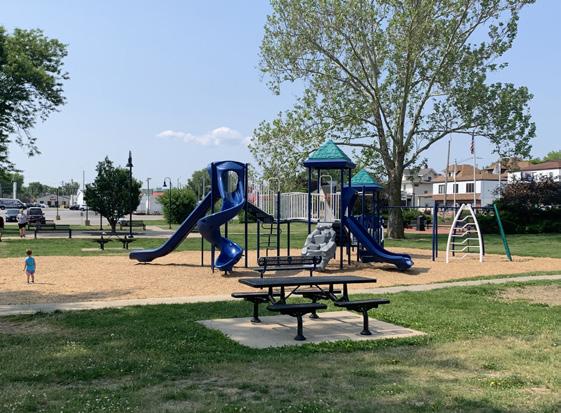





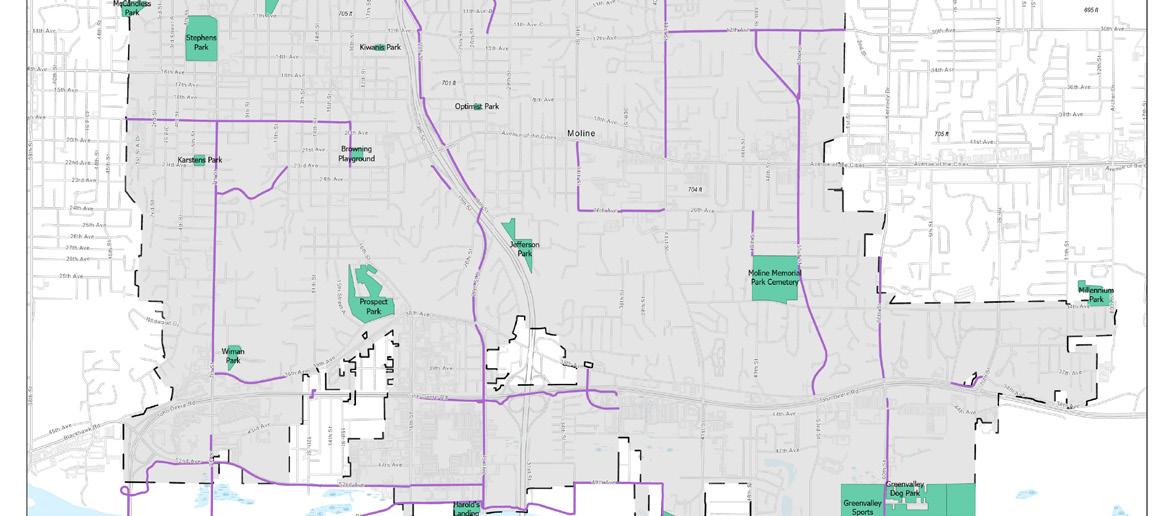
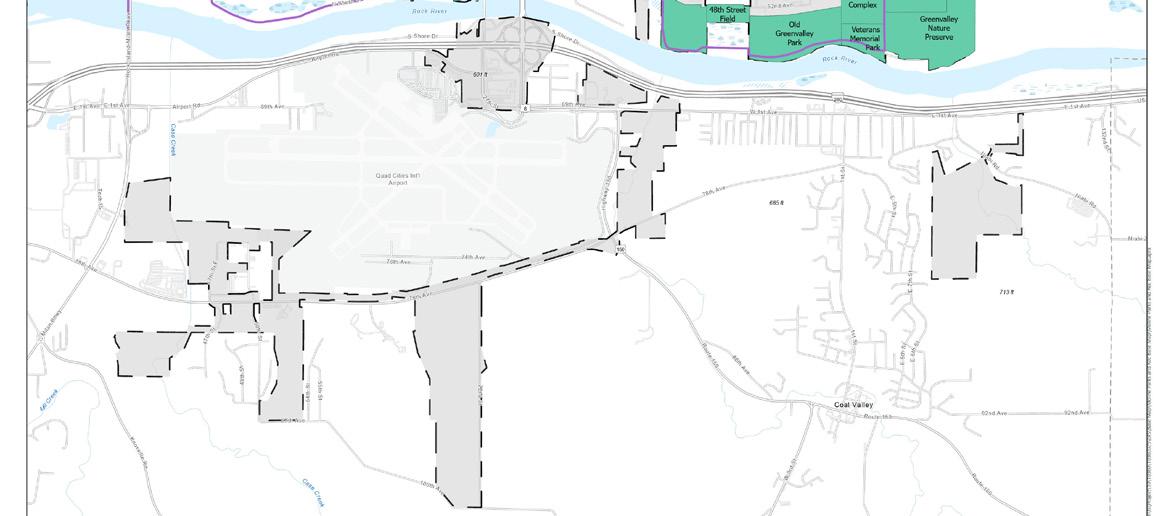


INITIAL RECOMMENDATIONS:
• Geese mitigation efforts
• Flood control measures
• Resilient design strategies
• Hardscape improvements
• Art and sculpture additions
• Consider widening the trail
• Add dog-friendly amenities (Dog wash station, waste bags, etc.)
• Modernize amenities and access to accommodate all users

PARK AMENITIES
Boat launch
Fishing areas
Drinking fountain
Flower gardens
Off-street parking
2 picnic shelters (ADA, must reserve)
Play equipment
Restrooms
4.54 miles of trails (paved)
Fishing pier (ADA)
Fitness equipment
Memorial patio
Bike racks
Little Free Library
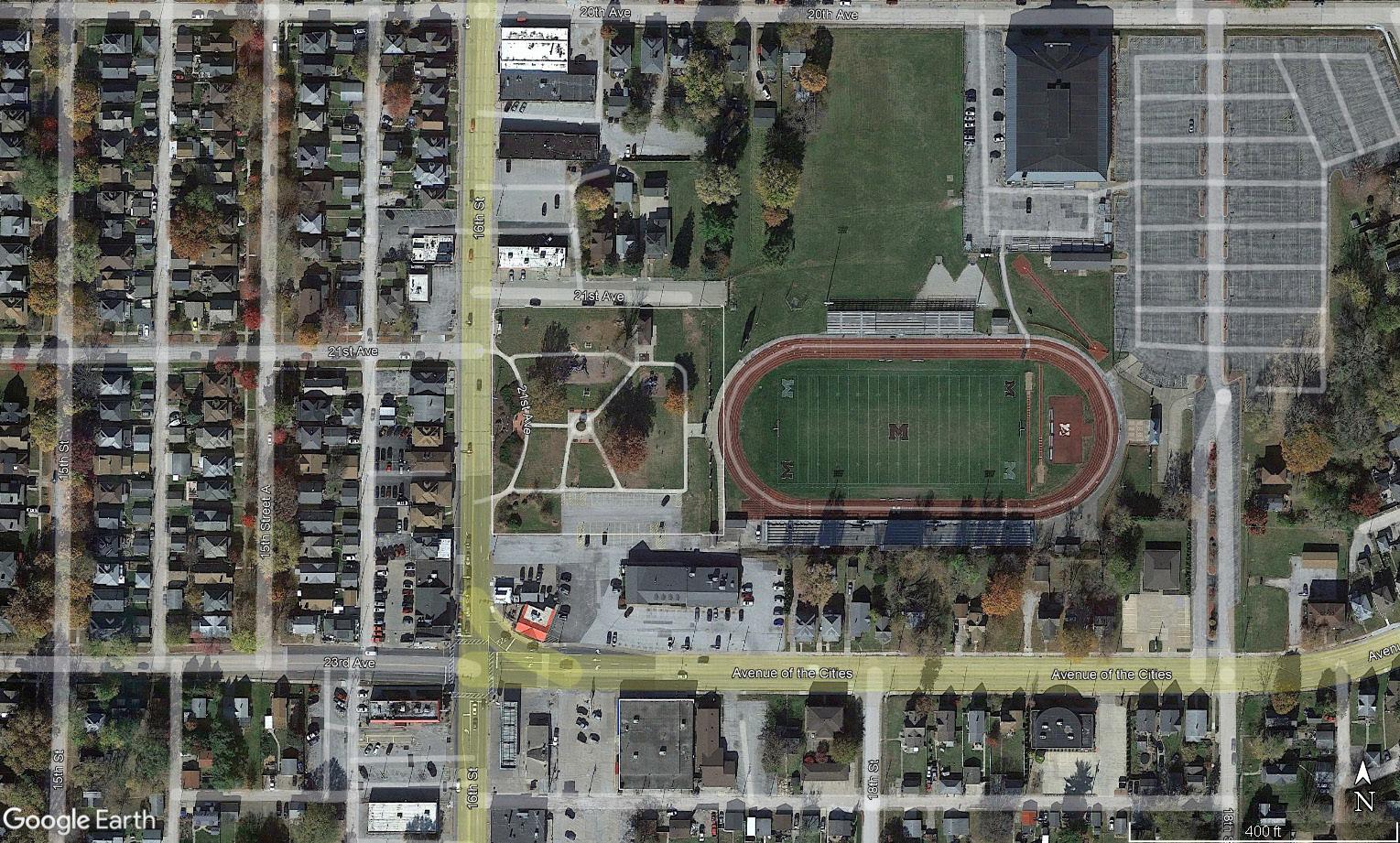
INITIAL RECOMMENDATIONS:
• Add additional parking
• Add additional lighting and security cameras
• Consider adding an emergency button
• Upgrade restrooms
• Incorporate poured-in-place/rubberized surfacing
• Add additional trees and shade structures
• Consider additional programming/events

Flower gardens
Off-street parking
Picnic shelter (ADA, must reserve)
Picnic tables/benches
Play equipment
Restrooms
Military Commemorative Stones


INITIAL RECOMMENDATIONS:
• Add parking
• More dog-friendly amenities (dog was station, waste bags, dog bowls, trash receptacles)
• Add more seating/benches near entrances
• Add more elements, ramps, etc.
• Update the small dog area
• Add more trees/shade
• Consider adding a water feature

Butterworth Dog Park is a 1.48, off-leash park located at 15th Street & 8th Avenue, downtown Moline. The park features separate areas for large and small dogs. The large dog area is divided into 2 separate sides to better maintain the grass, only one side will be open at a time. There are benches and dog/human drinking fountains on both sides (available May 1 - September 30) and a selfie station on the west side. There are no public restrooms
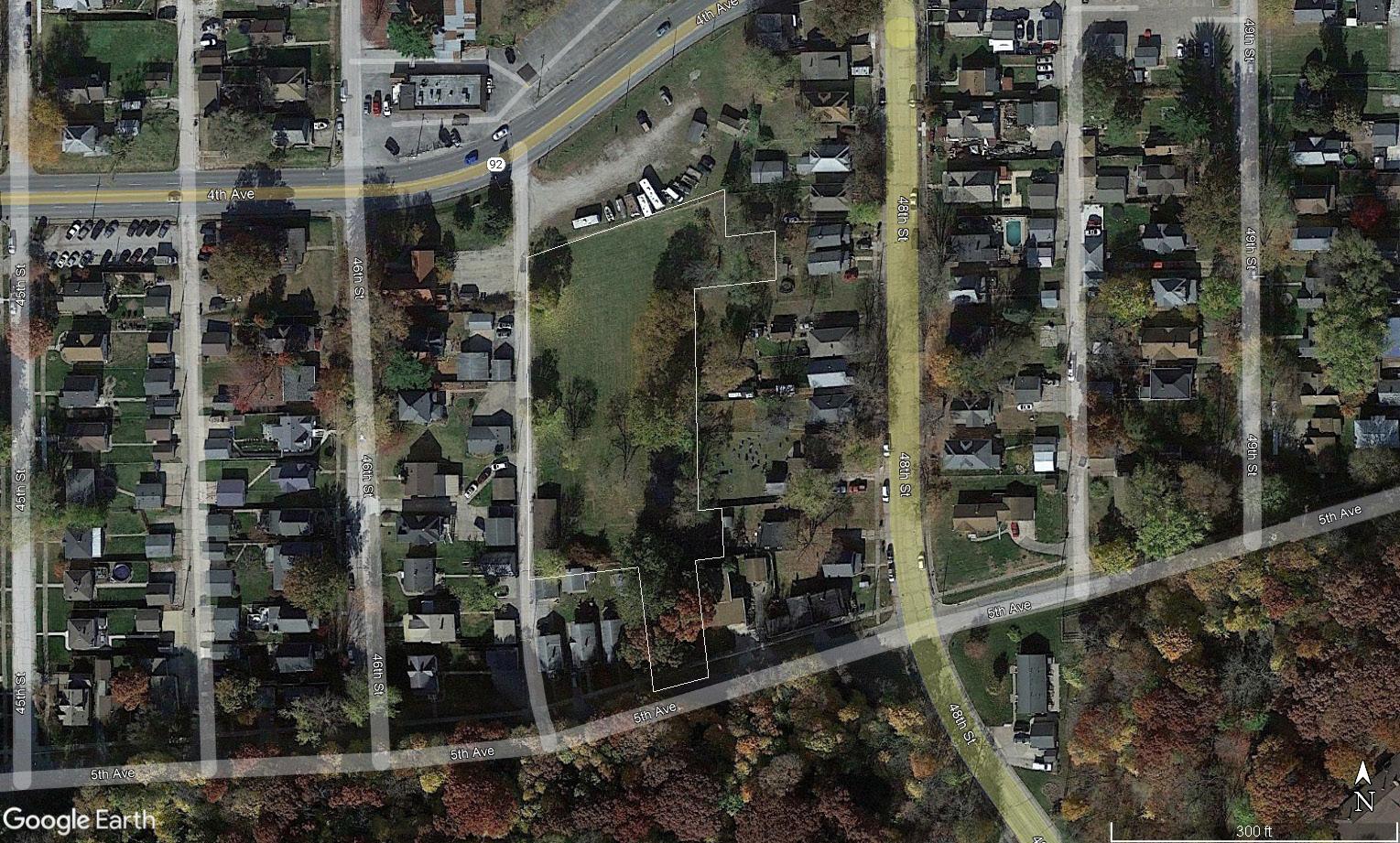

INITIAL RECOMMENDATIONS:
• Promote the new playground and shelter pad to be installed
• Consider transitioning the basketball court to parking
• Add additional lighting and security measures
• Work with the TIF district to acquire land for a parking lot
• Add additional signage

PARK AMENITIES
Open green space
Backstop Picnic shelter
Restrooms
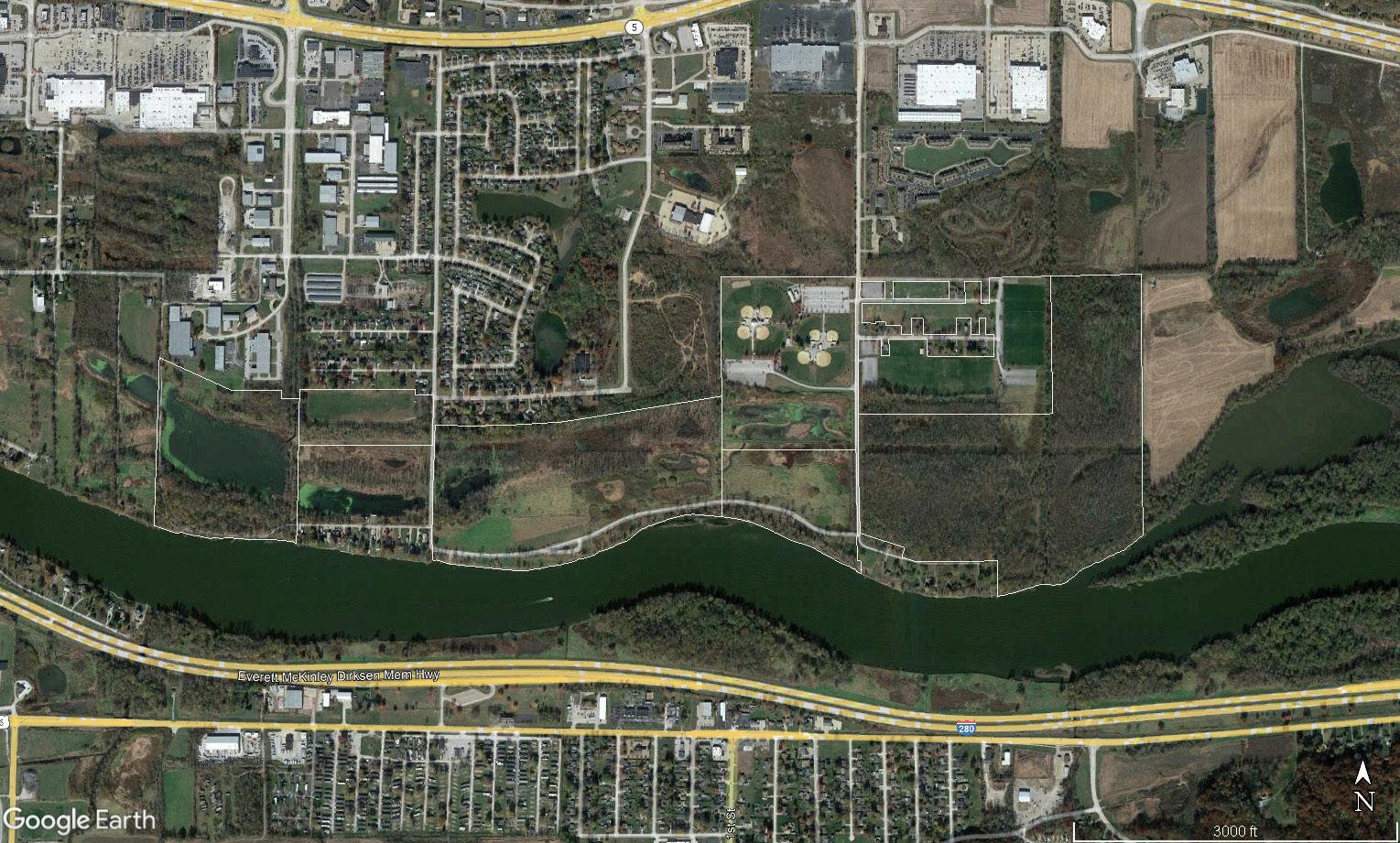

INITIAL RECOMMENDATIONS:
• Green Valley should be considered for its own Master Plan
• Add turf for fields
• Expand softball concessions
• Mist sprayers on softball and soccer fields
• More shade
• Remove sand volleyball and add soccer/football field area
• Baseball/softball warm-up area instead of batting cages
• Screens near concessions to be used to promote events (and sell advertisements through) as well as display concessions menus
• Purchase all homes in flood-zone
• More shade at the dog park
• Lights on soccer field
• Display some type of memorial for Veterans along the Rock River.
• Consider putting a campground along the river in the flood-zone
• Leave the east side of the park natural and consider putting native plantings and walking trails throughout

PARK AMENITIES
Softball/Baseball Diamonds
Boat launch
Fishing area
Play equipment
Flower gardens
Drinking fountains
Dog park
Off-street parking
Restrooms
Soccer fields
Sand volleyball courts
.818 miles of trails (gravel)
Kiwanis Trail
Radio controlled flying field
Open green space
Natural area & observation deck
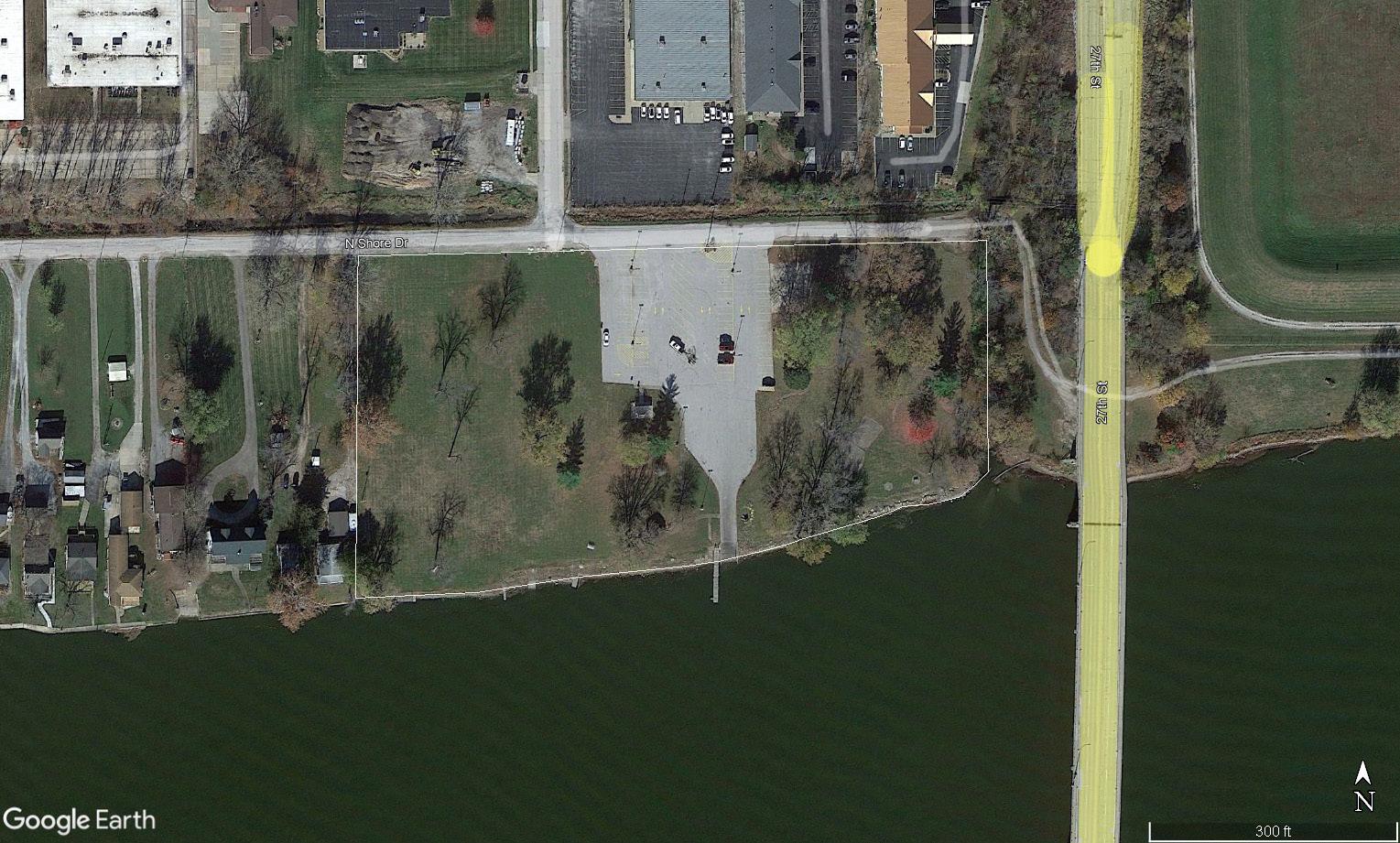

INITIAL RECOMMENDATIONS:
• Mitigate flooding
• Design with water
• Restroom improvements
• Boat dock improvements
• Consider adding a bicycle playground
• Add a flood-resistant shelter with separate parking
• Promote as a fishing destination
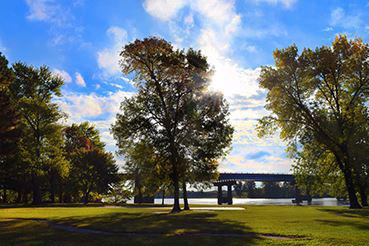
PARK AMENITIES
Boat launch
Fishing area
Off-street parking
Picnic area
Restrooms
Open green space
Gazebo
Benches


INITIAL RECOMMENDATIONS:
• Coordinate with the school to determine usage and ownership
• Consider adding parking
• Consider converting into a dog park
• Utilize greenspace

Open green space


INITIAL RECOMMENDATIONS:
• Add play equipment for younger children
• Update concrete for basketball court
• Consider converting the basketball into a multiuse court
• Improve lighting/security
• Consider fencing a portion for a small dog park

Softball/baseball diamond
Full basketball court
Open green space
Play equipment (NEW 2021)
Restrooms
Benches

INITIAL RECOMMENDATIONS:
• Consider removing or upgrading the fence
• Add a barrier along the alley side
• Consider adding parking
• Consider adding a restroom
• Potentially a candidate for a clean-slate park master plan
Full basketball court
Play equipment (New in 2019)
Picnic shelter
Open green space
Benches
Drinking fountain
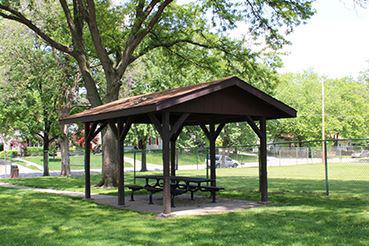
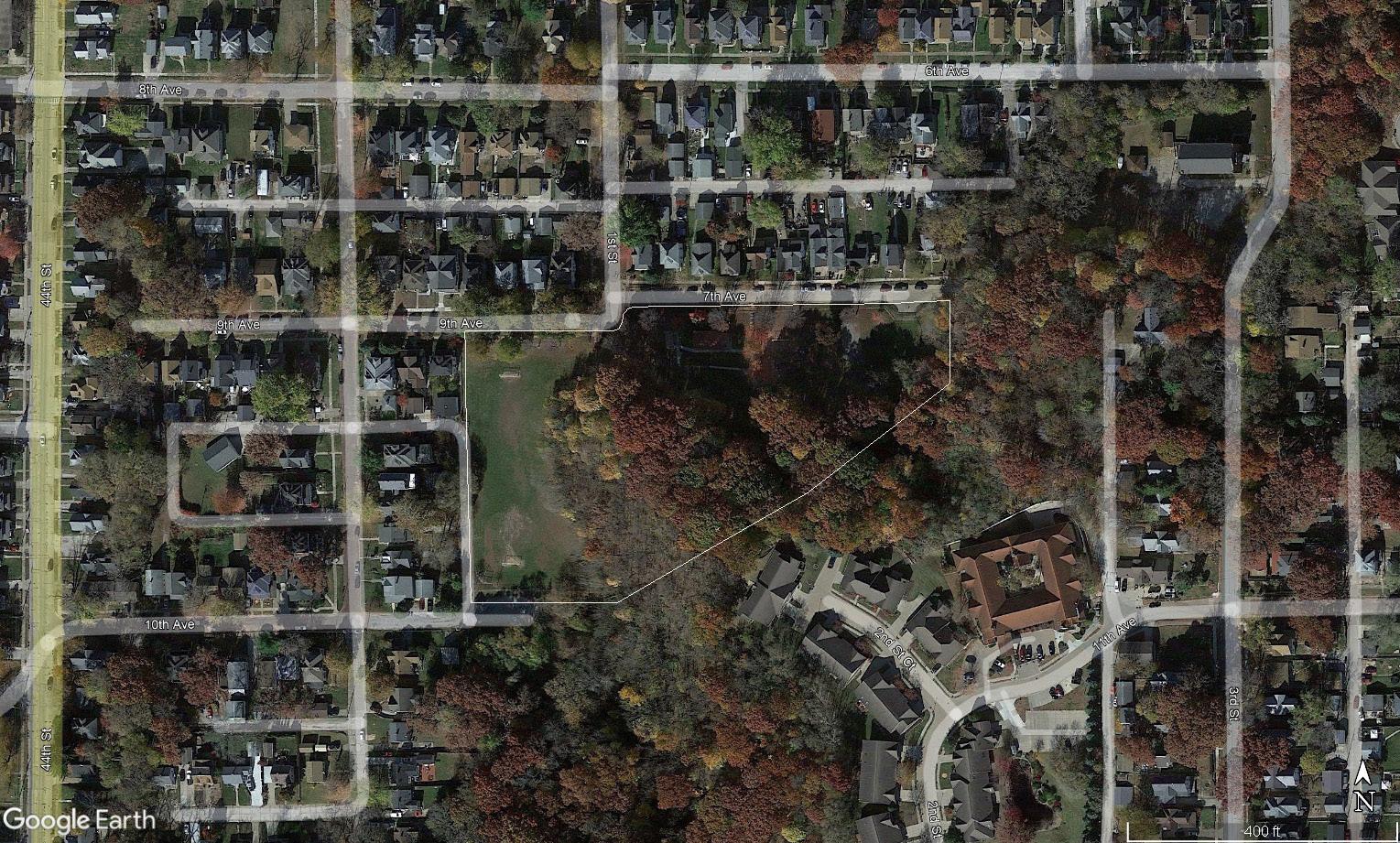
INITIAL RECOMMENDATIONS:
• Replace play equipment when needed
• Add additional signage
• Improve accessibility to the park
Full basketball court
Picnic shelter (ADA, must reserve)
Play equipment
Backstop
Open green space
Restrooms
Drinking Fountains
Soccer goals



INITIAL RECOMMENDATIONS:
• Update adjacent trails
• Add additional lighting
• Add poured-in-place/rubberized surfacing
• Add additional parking
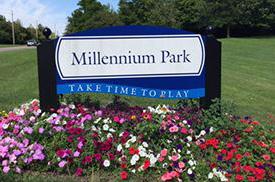
Off-street parking
Picnic shelter (ADA, must reserve)
Play equipment (new 2017)
Restrooms
Benches


INITIAL RECOMMENDATIONS:
• Add dog-friendly amenities such as waste bags, etc.
• Replace the maintenance garage
• Consider adding and office
• Incorporate step signage (Mile-Stones)

Moline Memorial Park Cemetery, formerly Valhalla Burial Park, began as a park cemetery in 1928. An early promotional advertisement identified Valhalla Park as “The Most Beautiful Burial Park in Illinois”.


INITIAL RECOMMENDATIONS:
• Update playground
• Add additional lighting and security
• Consider designating part of the park as a dog park
Picnic shelter
Play equipment
Benches



INITIAL RECOMMENDATIONS:
• Update restrooms
• Upgrade the parking lot
• Add lighting and security cameras
• Additional signage to park and shelter
• Additional programming (yoga in the park, etc.)
Off-street parking
Picnic shelter (ADA, must reserve)
Play equipment (new in 2019)
Restrooms
Scenic views
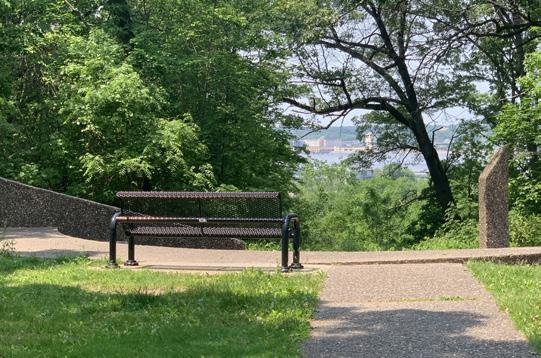
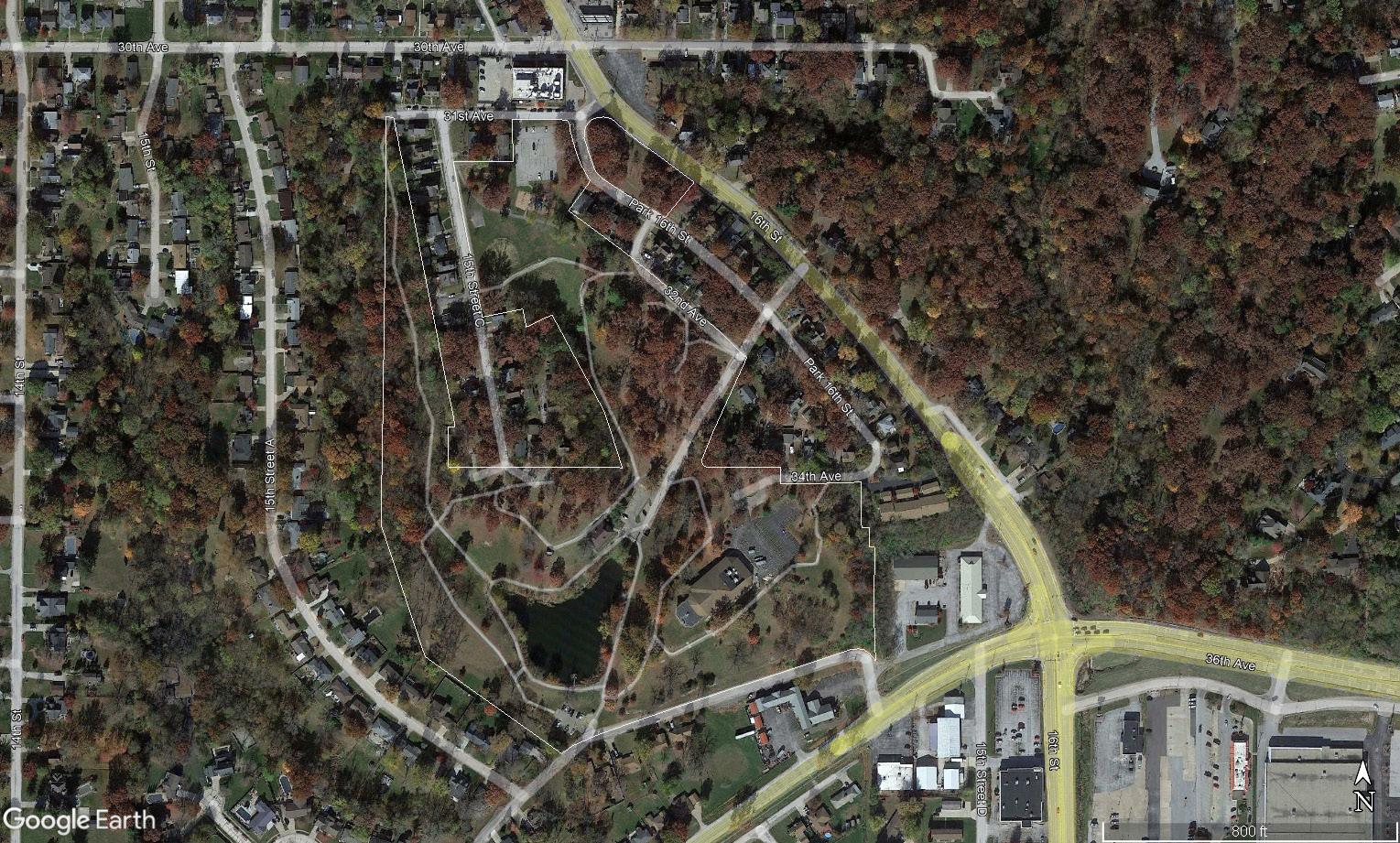

INITIAL RECOMMENDATIONS:
• Highlight viewsheds
• Add lighting on the steps for safety
• Add an emergency button along the trail to the woods
• Consider widening trails
• Improve accessibility to and within the park
• Mitigate invasive species

PARK AMENITIES
Softball/baseball diamond
1/2 Basketball court
Fishing area
Flower gardens
Off-street parking
2 Picnic shelters (ADA, must reserve)
Play equipment (new in 2018)
Restrooms
Drinking Fountain
1.947 miles of trails (paved)
Gazebo
Disc Golf
Little Free Library


RECOMMENDATIONS:
• Additional roadwork/asphalt overlay
• Add signage to memorialize certain graves
• Improve drainage areas
• Improve hillsides with terracing
• Continue straightening headstones as needed
Riverside Cemetery is much more than a public cemetery, but a rich history of Moline and the surrounding communities. The land where Moline is situated was occupied for the first time by white settlers in the year 1829. What began as Rock Island Mills in the 1830’s, was platted and changed to “Moline” in 1843. The town of Moline was incorporated in 1848.


• Widen sidewalks/trail system within
• Add little league parking with a shed
• Address community tennis, pickleball, and futsol needs
• Relocate park offices here
• Asphalt overlay at 4th and 5th (Pioneer Cemetery)
• Add accessible restrooms by the fishing area
• Add a parking lot by the pond with shelter
• Consider doing a full park master plan

Lighted pickleball courts (8) (new 2021)
Softball/baseball diamonds
Fishing area
Ice skating (seasonal)
Off-street parking
Drinking fountains
3 picnic shelters (must reserve)
Flower gardens
Restrooms
Sand volleyball court
Swimming pool
Open green space
Lighted tennis courts (8)
Indoor rental facility
Greenhouse
Playgrounds (2) (eastern playground is ADA)
Horseshoes
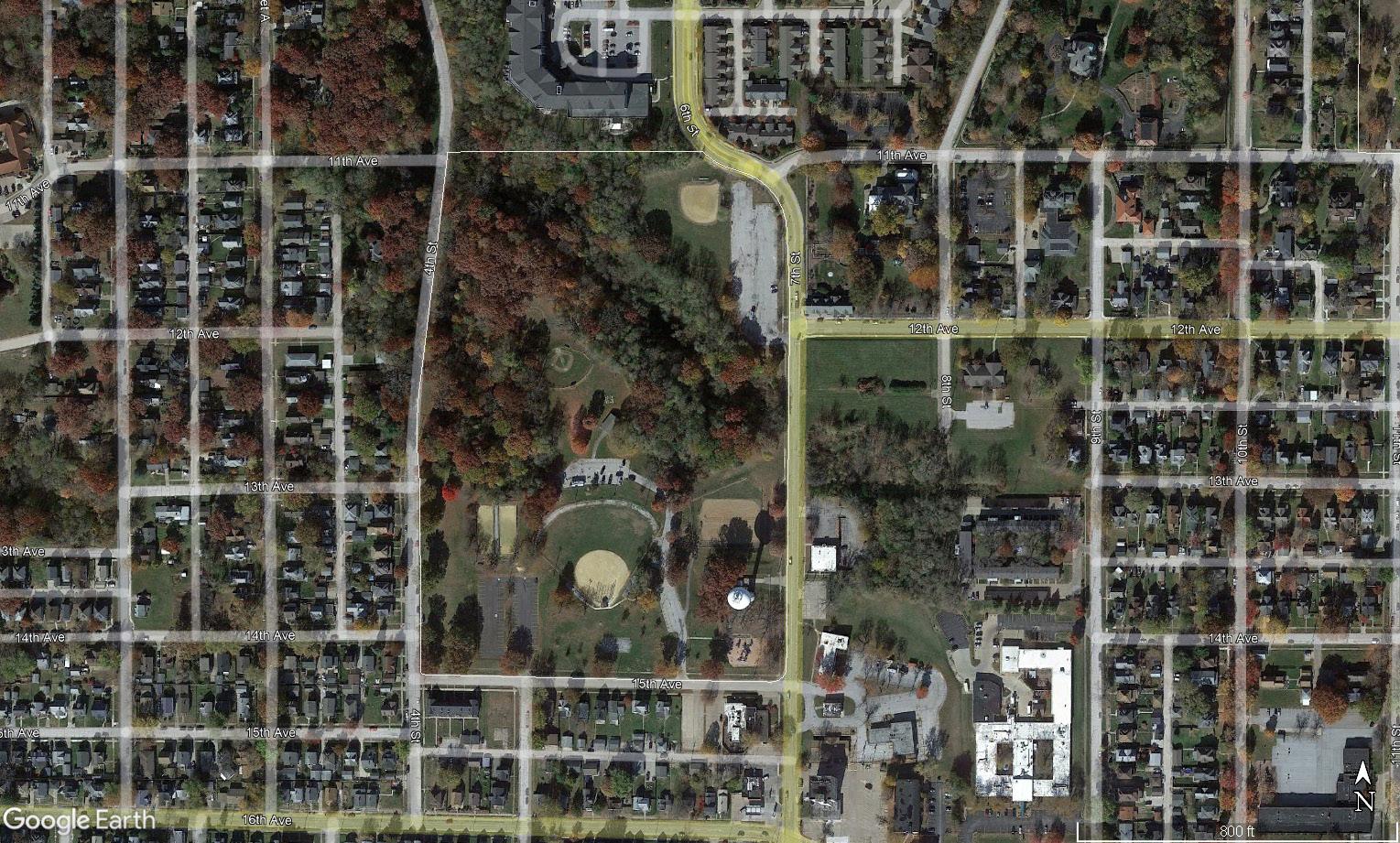
INITIAL RECOMMENDATIONS:
• Highlight the playground, mini-pitch to be added
• Poured-in-place/rubberized surfacing
• Roads and parking improvements
• Clean up tee-ball diamond
• Add lights and benches
• Futsol
• New fence for sand volleyball or move locations
• Consider a dog park
• Improve the trail system in the woods

Softball/baseball diamonds (3)
Full basketball court
Off-street parking
2 Picnic shelters (ADA, must reserve)
Play equipment
Restrooms
Open green space
Sand volleyball courts (3)
1.25 miles of trails (natural)
Rolle bolle
Little Free Library


INITIAL RECOMMENDATIONS:
• Coordinate with the senior center
• Update programming - concerts, Easter eggs, senior activities, etc.

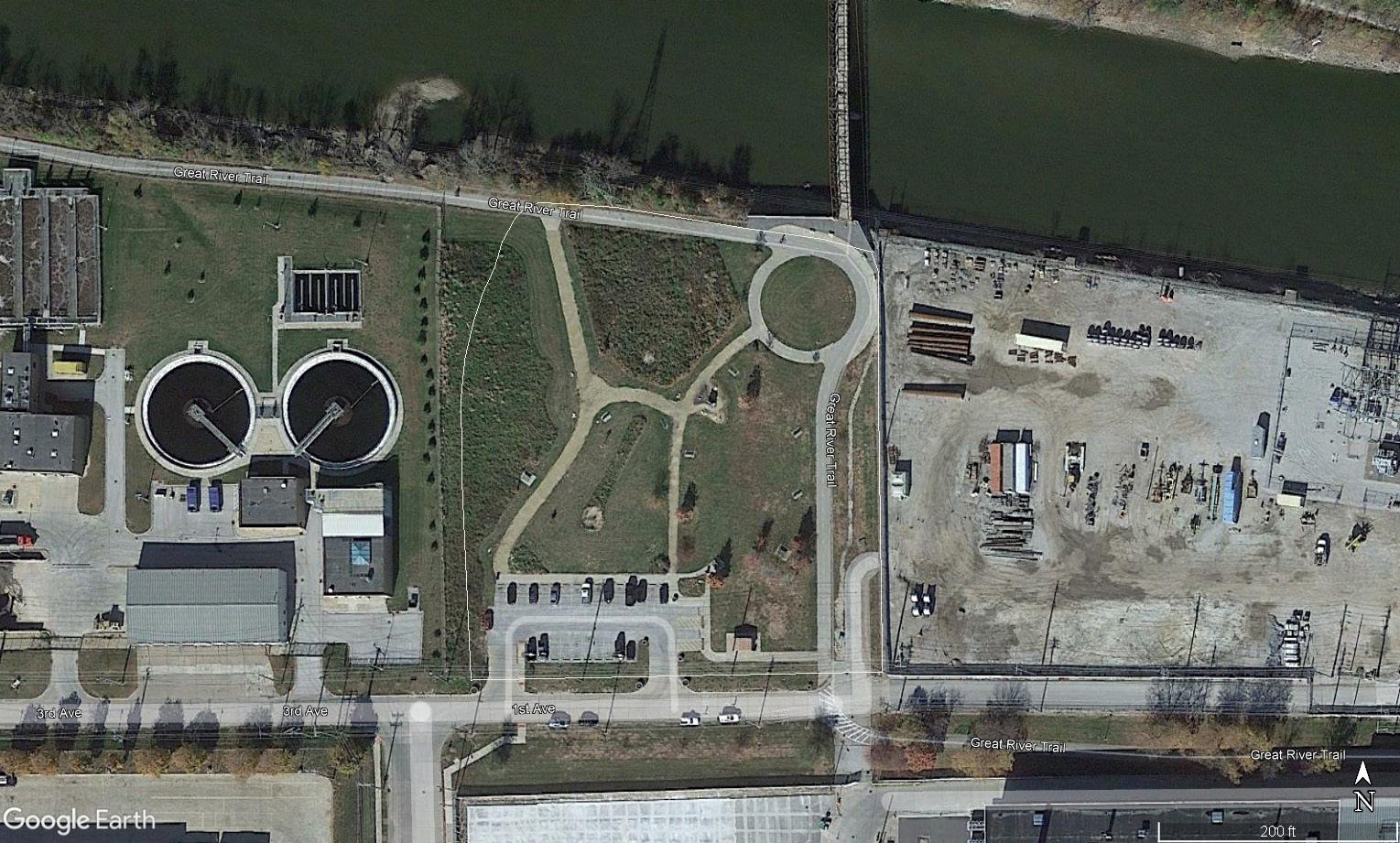

INITIAL RECOMMENDATIONS:
• Add more sheltered areas for picnics
• Additional promotion and signage

PARK AMENITIES
Off-street parking
Restrooms
John Deere Monument


INITIAL RECOMMENDATIONS:
• Replace all benches
• Add emergency buttons
• Incorporate historical/industrial signage
• Coordinate shelter installation
• Invasive species removal
• Add security cameras

Fishing areas
Picnic area
1.24 miles of trails (gravel/natural)


INITIAL RECOMMENDATIONS:
• Create and implement a maintenance plan
• Removed 20 trees this past year
• Do not want a playground. Consider a naturescape instead
• Want to be historic/scenic
• Does not have a parking lot
• Opportunity to host more events here
• Consider placing historic plaques around

Spanish American War Memorial Scenic view Benches


INITIAL RECOMMENDATIONS:
• Establish a neighborhood feel
• Promote the orchard located to the south
• Upgrade the playground (built in 2014)
• Update aesthetics
• Consider adding a community garden

PARK AMENITIES
Off-street parking
Play equipment
Restrooms
Drinking fountain
Benches
G oals , o bject I ves , and P ol I c I es
The City identified a need to reinvigorate its parks and recreation offerings for current and future residents. Public parks are a unique amenity because they have the potential to be accessible to anyone in the community, regardless of age, gender, ability, socioeconomic status, race or ethnicity. Though we often find that disparities exist in the distribution and quality of parks and recreation amenities, many Leisure Services Departments across the U.S. are now rethinking how to engage and provide benefits to residents who do not currently have access to parks. If parks can be more inclusive, they have the potential to function as a nucleus of neighborhood activity, where residents can gather for social events, recreational activities, and meetings about local issues, increasing social interaction and creating an overall sense of community.
Develop a comprehensive, usable, living document which outlines the current assets and improvements of the park system. This plan was created with the objective of analyzing the existing conditions of the parks to better develop an equitable and usable concept for the new park area for visitors and current and future residents. The recommendations of this plan are divided into two major sections:
The City of Moline will offer activities and programs for citizens of all ages and abilities, while diversifying recreation amenities and improving those that already exist to meet growing needs of the community.





Potential Future Park

Potential Future Park

Potential Future Park
Potential Future Park


Multiple public engagement efforts were used to determine the following desired future amenities. The public had opportunities to response both in person and online through the community and share what they would like to see be brought into Moline Parks and Recreation.







These activities are consistent with national trends, provide opportunities for all abilities, offer amenities for older children, and accommodate recreation for all. Although soccer and football were listed as high priorities through the survey, it should be noted that these are challenging to add to existing parks due to topography challenges, upkeep and more. Additional information on trends and modernizing Moline parks is described on the following page.
Moline has the potential to revolutionize various aspects of Parks and Recreation for residents, including: enhancing efficiency, accessibility, and overall visitor experience. One means of accomplishing these goals is through the use of AI, which can contribute to the improvement of Parks and Recreation through:
SMART RESOURCE MANAGEMENT:
Analyzing data on park usage, visitor demographics, and environmental factors to optimize resource allocation. This includes efficient scheduling of maintenance tasks, waste management, and energy consumption.
VISITOR ENGAGEMENT AND INTERACTION:
Providing real-time information to park visitors. These systems can answer common questions, offer directions, and provide information about park amenities, events, and historical significance, enhancing overall visitor engagement.
PREDICTIVE MAINTENANCE:
Predicting equipment failures and maintenance needs in park facilities by analyzing data. This proactive approach ensures that facilities are well-maintained, reducing downtime and ensuring a safer environment for visitors.
SECURITY AND SURVEILLANCE:
Enhancing park security by identifying unusual activities or potential threats.
TRAFFIC AND PARKING MANAGEMENT:
Analyzing real-time data on traffic flow and parking availability, helping visitors find parking spaces more efficiently. This can reduce congestion and enhance the overall accessibility of the park.
ENVIRONMENTAL MONITORING:
Monitoring environmental conditions within the park, such as air and water quality. This data can be used to address environmental issues promptly and ensure the long-term sustainability of the park.
PERSONALIZED EXPERIENCES:
Analyzing visitor preferences and behavior to offer personalized recommendations for activities, events, and points of interest within the park.
EFFICIENT EVENT PLANNING:
Streamlining the process of organizing events within the park by providing insights into the best times, locations, and themes based on historical data.
WILDLIFE CONSERVATION:
Monitoring and protecting wildlife and endangered species within parks.
ANALYSIS FOR DECISION-MAKING:
Processing vast amounts of data to provide park management with valuable insights. This includes trends in visitor demographics, popular attractions, and areas that may require additional attention or development.
Incorporating technologies into Parks and Recreation management not only enhances operational efficiency but also contributes to a more enjoyable and sustainable experience for visitors. However, it’s crucial to strike a balance between technological advancements and preserving the natural and cultural integrity of the parks.
The purpose of this plan is to guide development of subsequent parks, recreation, open spaces, and bicycle and pedestrian facilities in the City. Goals are presented here as desired outcomes. Strategies include both actions and policy rules—they are the methods proposed to achieve the stated goals.
Have safe access to quality park and recreation facilities and programming regardless of income, age, race, ability, or geographic location.
Provide additional park land and amenities to meet current and future recreation needs.
Develop, improve, and operate the City’s parks and recreation programs in a cost effective manner.
Coordinate park development efforts with other City departments, other units of government, the School District, and sporting organizations.
Provide residents with safe and reliable recreation equipment throughout the City park system.
Provide a seamless network of trails that provide safe and comfortable access.
Parks and open spaces will be designed to be as aesthetically pleasing as possible. 1 2 3 4 5 6 7 8
Provide adequate management and staffing levels to oversee the maintenance of park and open space lands and facilities.
CHAPTER 4
P ark n eeds and d e M ands
This chapter presents an analysis of how well the City’s existing park and recreation facilities satisfy current needs. These findings are derived from the:
















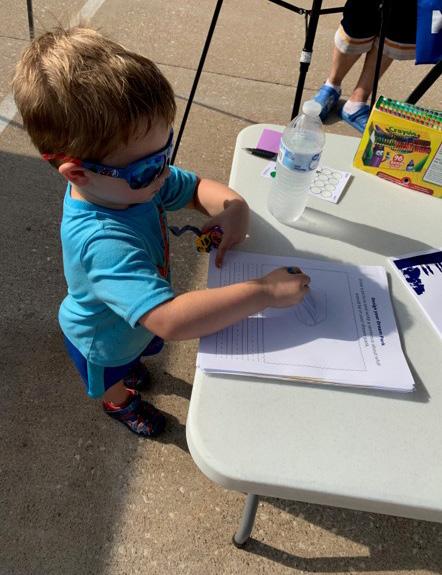

What is your age?

Do you have children living in your home that are under the age of 18?

How long have you lived in Moline?

35-44
Yes
15+ yrs
How close is the nearest park or trail to your home?

What is your favorite park and recreation area to visit in the City?

Please identify a type of NEW recreation program or service that the community should consider offering.

Please identify a type of NEW feature that the community should consider offering.

A project website was developed and included the project survey, master planning process, project components, project materials and more. The website also provided a venue to stay informed throughout the planning process, and provided an easy way for citizens to view project materials. This aspect of the communication and participation strategy was important for transparency, as well as sharing information with community members. To view the website, please visit:
https://storymaps.arcgis.com/stories/eff28038c33844f3a7b4d3db8b4ca0c9

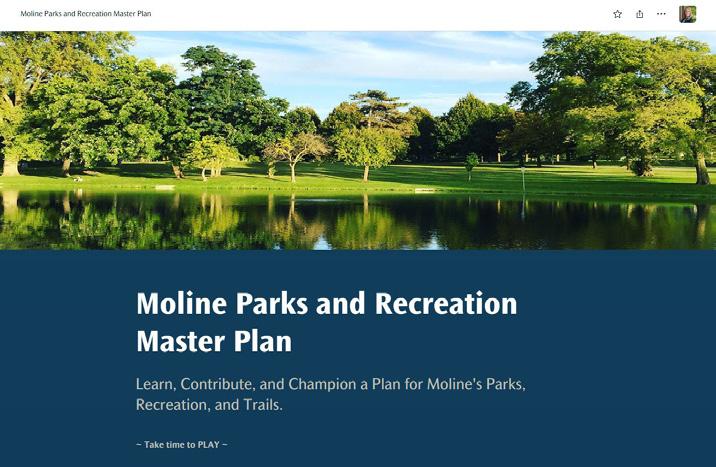


This Plan is grounded in a set of issues about which the residents and City are concerned, and opportunities for positive change. The Plan seeks to address perceived deficiencies and capitalize on opportunities. This section is a compilation of key issues and opportunities. A SWOT analysis exercise was used to gather this information from the Steering Committee as well as from the general public at each community engagement and visioning session.
















Strengths - characteristics that give the community an advantage over others. Weaknesses - characteristics that place the community at a disadvantage relative to others. Opportunities - elements the community could exploit to advantage the community. Threats - elements in the environment that could cause trouble for the community in the future.
Strengths
• Maintenance crew does a great job
• Tree canopy
• Relatively new play equipment
• Open to new recreation opportunities (naturescape, etc.)
Weaknesses
• Leaf collection program takes away resources at a key time
• Geese, particularly at Ben Butterworth Parkway
• Finances
• Warming Shelter at Riverside
Opportunities
• South Park Mall Area
• I-70 Corridor Study
• Green Valley
• Build upon identity - Manufacturing and History
• Recreation Center (similar but not to compete with Betplex)
Threats
• Funding

Key Findings:
The City of Moline Parks and Recreation Master Plan | 2014
This Plan is broken down into the following sections:
• Background, purpose, goals and objectives
• Natural characteristics
• Demographic characteristics and trends
• Standards and inventory of park and recreation facilities
• Existing parks, recreation facilities, recreation programs/activities, and multi-purpose trail and recommended improvements
• Future parks
• Plan summary
The 2014 City of Moline Parks and Recreation Master Plan includes information on recreation and open space opportunities in the City. This plan’s primary objective was to establish a viable framework of goals and priorities, as well as short and some longterm improvements.
The core values of the Plan included: Wellness – We promote healthy lifestyles to our individuals, families, and community as a whole.
Community Focus – We enhance community pride by providing essential park and recreation services.
Quality services – We provide diverse recreational programs, opportunities, and facilities. Adaptability – We make innovative use of our resources to meet the evolving needs of our community.
Collaboration – We work with community partners and volunteers to serve our residents and visitors.
- To provide adequate, desirable and accessible park and recreation opportunities to the citizens of Moline in a cost-effective manner.
- To coordinate The City of Moline Parks and Recreation Master Plan with other Quad Cities community and regional park system plans.
- To set aside land for open space and parks and to protect natural resources for the benefit of Moline residents.
- To enhance the physical beauty and the quality of life within the City of Moline while continuing to balance the livability of the community with population growth and development.
• Improve maintenance of parks including mowing, weed control, litter control, and restroom cleaning
• Evaluate all park fences for need, repairs, location, and height
• Repair all parking lots and park roads
• Continue to implement park signage plan replacing brown signs with blue and black aluminum signs
• Maintain and prune trees
• Improve all restrooms, as funding allows, to reduce vandalism and improve accessibility
• Consider security process to lock restrooms at night in partnership with police department
• Improve parks near traffic areas for visibility
• Explore possibility of providing pickle ball facilities in an appropriate existing park
• Provide more river access when possible along existing riverfront parks and trails
• Consider increasing funding to parks from hotel/motel tax
• Consider an indoor recreation facility including gymnasiums, office space, whence funding is available
• Continue evaluation of park fences as noted
• Continue to repair parking lots and park roads
• Continue improvements to restrooms as noted
• Continue implementation of signage plan as noted
CHAPTER 5
Proposed recommendations are a key component of the Park and Open Space Master Plan. Based on all of the research, analysis, visioning, evaluation and community input that was completed, recommendations have been formulated that provide direction for implementation.






To ensure that all community members have easy access to local parks and recreational areas.
Encourage a culture of creativity and innovation within the parks.
Improve the physical and mental well-being of community members.
Protect and beautify the natural spaces within the community.
Instill a sense of pride and belonging among community members.
Continue to research and promote new certifications, classes, and continuing education for staff.

Develop and maintain an inclusive parks and recreation system that enhances existing parks, creates new green spaces, and ensures easy access for all residents. This includes adding playgrounds, walking trails, and sports facilities to underserved areas of the city, as well as regularly maintaining and improving existing parks.
Increase the number of parks and green spaces in underserved neighborhoods.
Implement accessible infrastructure such as sidewalks and bike lanes connecting parks to residential areas.
Develop a public transportation plan that facilitates access to parks, reducing reliance on private vehicles.

Establish innovation programs and partnerships with local businesses and educational institutions to improve parks. This could involve offering grants for startups, and organizing innovation challenges to encourage park enhancements in Moline.
Establish innovative parks and gathering spaces that residents and visitors can take pride in.
Organize regular workshops, programs, and events to promote learning and idea exchange.
Partner with local businesses and educational institutions to provide resources for park enhancements.

Launch a city-wide health and wellness campaign to educate residents about healthy living and provide affordable access to healthcare services. This may include hosting health fairs, fitness classes, and collaborating with parks and recreation leaders to offer resources to improve the overall well-being of the community
Organize fitness and wellness programs in local parks, such as yoga classes, walking groups, and outdoor exercise stations.
Educate residents about healthy living through workshops, seminars, and parks and recreation programs.
Collaborate with community members to encourage play, fitness, education and personal connections for all ages, interests and abilities.

Implement a comprehensive natural spaces preservation strategy that focuses on conserving the unique natural areas within Moline. This could involve stricter environmental regulations, protection of riverfronts, and the development of green corridors that connect existing natural spaces, allowing residents to enjoy the city’s natural beauty while safeguarding its ecological health.
Launch community clean-up initiatives to remove litter and invasive species from local parks and natural areas.
Implement conservation projects to protect wildlife habitats, plant native species, and green spaces.
Develop nature trails and educational signage to increase awareness and appreciation of local ecosystems.

Create cultural and heritage preservation initiatives to celebrate the city’s history, diversity, and cultural identity. This could involve public art installations, historical preservation projects, and community events that bring residents together, fostering a sense of pride and belonging in Moline. Encourage residents to actively participate in shaping the city’s identity and narrative.
Organize regular community events, celebrations, and festivals that showcase local culture and talents.
Support public art projects, murals, and beautification efforts to enhance the visual appeal of the community.
Recognize outstanding individuals and community groups with awards for their contributions to the community’s wellbeing and vibrancy.

METHODS:
There are learning opportunities offered by NRPA and state associations through conferences, online learning, and in-person workshops and seminars. However, some of the most impactful continuing education experiences occur at professional development schools. These intensive onsite multiday learning experiences give participants the opportunity to learn the latest methods for effective park and recreation management.
Continue to research and promote new certifications, classes, and continuing education for staff.
Consider looking at the CAPRA Accreditation at the Department level.
Track and measure the agency’s overall quality of operation, management, and service to the community.
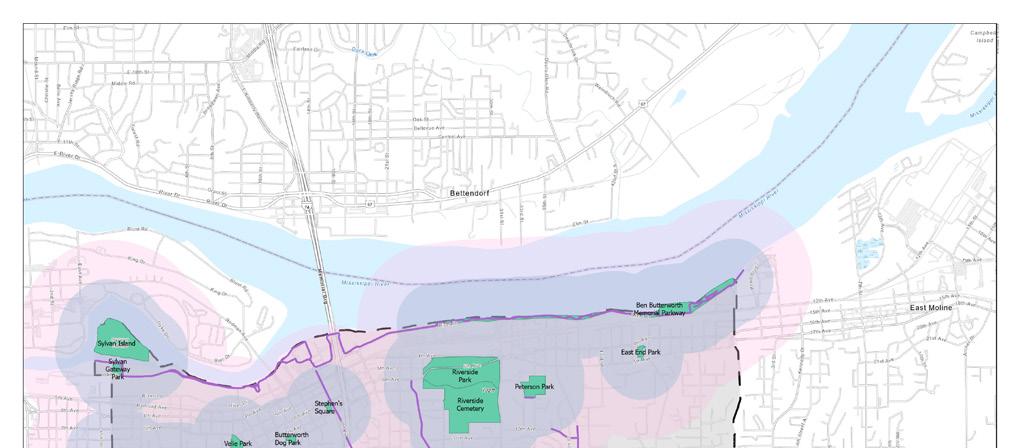
legenD:
Park Master Plan
PlaygrounD resurfacing
Play equiPMent uPgraDes
stePhens Park Master Plan
riverside Park Master Plan
orDer of Priorities:
1. green valley Park
2. Ben Butterworth Pkwy
3. riversiDe Park
4. Browning Park
5. stePhens Park
BrowninG Park Master Plan 1 2 3 4 5 Ben


Consider added ParkinG at:
Browning Park
Butterworth Dog Park east enD Park
harolD’s lanDing
Jefferson Park kiwanis Park
MillenniuM Park
Peterson Park
riversiDe Park
stePhens Park velie Park
Green valley Park Master Plan
additional reCoMMendations:
- geese Mitigation
- naturescaPe
- flooD control Measures
- art anD sculPture aDDitions
-Dog frienDly aMenities
- restrooM uPgraDes
- aDa accessiBility
- lighting
- aDDeD PrograMMing
- aDDitional shaDe
- Park Diversification

legenD:
Park Master Plan
PlaygrounD resurfacing
Play equiPMent uPgraDes
stePhens Park resurfaCinG

1. stePhens Park
2. Browning Park
3. ProsPect Park
4. MillenniuM Park orDer of Priorities:
BrowninG Park resurfaCinG

MillenniuM Park resurfaCinG
ProsPeCt Park resurfaCinG

Consider added ParkinG at:
Browning Park
Butterworth Dog Park east enD Park
harolD’s lanDing Jefferson Park kiwanis Park
MillenniuM Park Peterson Park riversiDe Park stePhens Park velie Park
additional reCoMMendations:
- geese Mitigation
- naturescaPe
- flooD control Measures
- art anD sculPture aDDitions
-Dog frienDly aMenities
- restrooM uPgraDes
- aDa accessiBility
- lighting
- aDDeD PrograMMing
- aDDitional shaDe
- Park Diversification

legenD:
Park Master Plan
PlaygrounD resurfacing
1. Browning Park
2. MccanDless Park

Play equiPMent uPgraDes 2
riverside little leaGue Play equiPMent
MCCandless Play equiPMent
BrowninG Park Play equiPMent
ProsPeCt Park Play equiPMent
3. riversiDe little league
4. ProsPect Park
5. Ben Butterworth Pkwy orDer of Priorities:
Ben Butterworth Pkwy Play equiPMent


Consider added ParkinG at:
Browning Park
Butterworth Dog Park east enD Park
harolD’s lanDing
Jefferson Park kiwanis Park
MillenniuM Park
Peterson Park
riversiDe Park
stePhens Park velie Park
additional reCoMMendations:
- geese Mitigation
- naturescaPe
- flooD control Measures
- art anD sculPture aDDitions
-Dog frienDly aMenities
- restrooM uPgraDes
- aDa accessiBility
- lighting
- aDDeD PrograMMing
- aDDitional shaDe
- Park Diversification

CHAPTER 6
I MP le M entat I on
One of the most important aspects of the Master Plan is the discussion on implementation. This section explores potential funding opportunities, discusses the value of establishing priorities, and suggests recommended monitoring methods. This plan also makes an appeal to public partners and citizen groups to provide oversight and to be actively involved in implementation. Residents, local government, the school district, law enforcement, healthcare, local businesses, developers, and other agencies will need to work together for Moline’s vision for its parks, trails, and open space system to be successful.
As previously described, the community has indicated that fixing what Moline already has before investing in new attractions, is a primary goal. To achieve that goal, the City should begin by approaching improvement recommendations for priority parks. As these recommendations were determined at a master plan level, each project will require additional study, planning and design. Some of these projects will be within the capabilities of City staff, both on the design and implementation stages. However, more complex projects will likely require involvement from outside consultants.
The City is encouraged to start planning recommendations into the capital improvement budget. Selecting lower cost projects for immediate implementation will illustrate the City’s willingness to put this master plan into action. It will demonstrate commitment to its objectives for implementing this plan and will set a positive course for fulfilling the goals defined by the community.

The Action Plan is designed as a guide to help Moline community leaders prioritize opportunities and address issues within the City of Moline and the surrounding area as it relates to parks and recreation. The desired vision for Moline cannot be created over night. However, by incrementally implementing the recommendations within this plan, Moline can achieve the desired outcomes set forth in this plan.
There are five broad funding sources available to help offset costs to complete the projects listed in this Plan, as described below.
General Municipal Funding – It is assumed that some general municipal funds/borrowing will be required to assist with the completion of projects or as a matching source for state or federal grants (e.g. wayfinding, signage, or park land acquisition).
Special Assessments – Particular projects that benefit individual properties (e.g. sidewalk/trail installations) could be funded through special assessments whereby the City recoups initial design and construction costs through increased real estate taxes on those properties for a set period of time.
Private Donations – Some of the projects could be partially or fully funded through private donations or public fundraising.
State and Federal Grants – There are many different state or federal grants that may be able to offset the costs of some of the identified projects. Only those programs most likely to award funding to Moline are listed.

Tax Increment Financing (TIF) – Tax increment financing (TIF) is a program where the additional taxes generated from development in a TIF district would go towards specified public improvements in a community. This program helps waylay the impacts of new development on a community while improving the attractiveness of the City.
The next page highlights specific funding programs available to consider.
https://www2.illinois.gov/dnr/grants/Pages/OpenSpaceLandsAquisitionDevelopment-Grant.aspx
The Open Space Lands Acquisition and Development (OSLAD) Program is a state-financed grant program that provides funding assistance to local government agencies for acquisition and/or development of land for public parks and open space. The federal Land & Water Conservation Fund program (known as both LWCF and LAWCON) is a similar program with similar objectives. Both are managed in Illinois by the Department of Natural Resources with concurrent application due dates, equal grant maximums and similar general rules.
Projects vary from small neighborhood parks or tot lots to large community and county parks and nature areas. The state program is financed by a percentage of the state’s Real Estate Transfer Tax. The federal program is financed nationally by revenue from offshore oil and gas leases.
Under both programs, funding assistance up to 50% (90% for distressed communities – OSLAD program only) of approved project costs can be obtained. Grant awards up to $750,000 are available for acquisition projects, while development/renovation projects (OSLAD programs only) are limited to a $400,000 grant maximum.
OSLAD/LWCF grants are available to units of local government that are authorized by Illinois law to expend public funds for the acquisition and development of land for public outdoor park, recreation, or conservation purposes are eligible to apply for funding assistance. School districts are not eligible. There are now five grantee pre-award requirements statewide per Grant Accountability and Transparency Act (GATA) State Statute 30 ILCS 708/1.
1. Acquisition of land for new park sites or park expansion, water frontage, nature study, and natural resource preservation. (LWCF & OSLAD)
2. Development/Renovation of: (OSLAD only) Picnic and playground facilities; Outdoor nature interpretive facilities; Sports courts and play fields; Swimming pools, beaches and bathhouses; Campgrounds and fishing piers; Winter sports facilities; Park roads and paths, parking, utilities and restrooms; and Architectural/engineering (A/E) services necessary for proper design and construction of approved project components.
Written applications must be submitted to IDNR during the period indicated on the current Notice of Funding Opportunity (NOFO) on the GATA website. Only those local government agencies having statutory authority to acquire and develop land for public park purposes are eligible to apply for and receive assistance under the OSLAD and LWCF grant programs.
Applications are evaluated and prioritized for funding assistance based upon recreation priorities and criteria identified in the Department’s Statewide Comprehensive Outdoor Recreation Plan (SCORP). Lands acquired with OSLAD or LWCF funds are required to be operated and maintained in perpetuity for public outdoor recreation.
https://www2.illinois.gov/dnr/grants/Pages/PARC-Grant.aspx
The Park and Recreational Facility Construction Act (PARC) provides grants to eligible local governments for park and recreation unit construction projects and land acquisition.
Applicant Eligibility
PARC grants are available to units of local government that are authorized by Illinois law to expend public funds for the acquisition and development of land for public indoor/outdoor park, recreation, or conservation purposes are eligible to apply for funding assistance. School districts are not eligible. There are now five grantee pre-award requirements statewide per Grant Accountability and Transparency Act (GATA) State Statute 30 ILCS 708/1.
Eligible Projects
PARC grants must be used for “bondable” or “brick and mortar” projects. Eligible capital expenditures include (but are not limited to) demolition in preparation for recreational development, site preparation and improvements for indoor/outdoor recreation purposes, utility work for indoor/outdoor recreation purposes, reconstruction or improvement of existing buildings or facilities for indoor/outdoor recreation purposes, expansion of buildings/facilities for indoor/outdoor recreation purposes, and new construction of buildings/structures.
Land acquisition projects for public park recreation and conservation purposes include, but are not limited to, acquisition of land for the following: to construct new public indoor/outdoor recreation buildings, structures and facilities; to expand existing public indoor/outdoor recreation buildings, structures and facilities; general park purposes such as regional, community, and neighborhood parks and playfields; frontage on public surface waters for recreation use; open space/conservation purposes to protect floodplains, wetlands, natural areas, wildlife habitat, and unique geologic and biologic features, and additions to such areas.
Please note that the priority of the program is the renovation or construction of indoor recreation facilities since they are not eligible under other IDNR grant programs. PARC Grant covers 75% of capital project cost for most applicants and 90% of capital project cost for Disadvantaged Communities.
https://www2.illinois.gov/dnr/grants/Pages/BoatAccessAreaDevelopmentProgram.aspx
The Boat Access Area Development (BAAD) Program provides financial assistance to local government agencies for the acquisition, construction, and expansion/rehabilitation, including necessary A/E services, of public boat and canoe access areas on Illinois’ lakes and rivers. Eligible sites are limited to navigable public bodies of water. The program provides up to 100% of approved project construction costs and 90% of approved land acquisition costs. Grant awards are limited to a $200,000 maximum for motorized launch sites and $80,000 maximum for non-motorized launch sites.
Applications for grant assistance must be received by IDNR between the dates posted on the Notice of Funding Opportunity each fiscal year in which the program is active. Grant awards are typically announced the following spring. Revenue for this state funded program is derived from marine motor fuel tax and boat registration fees.
Eligible Projects
1. Water frontage land acquisition for public access areas; and 2. New construction or renovation of Boat/canoe launching ramps and courtesy docks; Restrooms and security lighting; Parking areas, access roads and walkways; and Other boating related facilities deemed appropriate by IDNR.
https://www2.illinois.gov/dnr/grants/Pages/IllinoisTrailsGrantPrograms.aspx
The Illinois Department of Natural Resources (IDNR) administers five (5) grant programs that can provide funding assistance to acquire, develop and, in some cases, maintain trails for a variety of public recreation uses. These programs can also restore areas damaged by unauthorized trail use activity.
The programs are:
Bike Path Program
Local Government Snowmobile Program
Snowmobile Trail Establishment Fund (STEF) Program
Off-Highway Vehicle (OHV) Program
Federal Recreational Trails Program (RTP)
These programs provide grant assistance on a wide variety of trail related projects in the state. Each program operates on an annual recurring grant cycle with funds awarded on the basis of a review and prioritization of written applications submitted to the IDNR. Projects are evaluated according to established trail objectives and priorities. The director of the IDNR, in consultation with staff and the Illinois Natural Resources Advisory Board, the Illinois Greenways & Trails Council and the Illinois Off-Highway Vehicle Trails Advisory Board, as appropriate, has sole authority and responsibility for approving grants through these programs.
Funds awarded and disbursed under these programs are on a reimbursement basis. This means that once a project proposal is submitted to the IDNR and approved for grant funding, the project sponsor is responsible for successfully completing the project and initially financing the entire project cost. Actual disbursement of grant funds to the project sponsor is made after the approved project is satisfactorily completed and a final project billing statement, verifying project costs, is submitted to the IDNR for reimbursement. Forty-five (45) days should be allowed after submittal of an acceptable billing request to the IDNR for receipt of actual grant reimbursement payment.
The Illinois Trails Grant Programs manual provides information on program regulations and procedures for making application to the IDNR for funding consideration under any of these programs.
Ben Butterworth Parkway
Remove sand volleyball and add soccer/football field area
Baseball/softball warm-up area instead of batting cages
Screens near concessions to be used to promote events (and sell advertisements through) as well as display concessions menus
Lights on soccer field
Leave the east side of the park natural and consider putting native plantings and walking trails throughout
Display some type of memorial for Veterans along the Rock River.
putting a campground along the river in the






